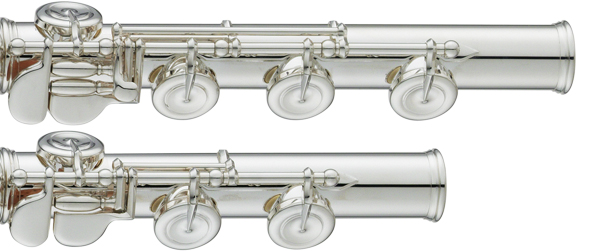Flute Features – B Footjoints
28th February 2019Many flutes have the option of adding a number of different features, one of the most common being the B footjoint. As well as exploring what this does and how it affects the instrument, we’ll be demonstrating the differences in a video with a pro Flute player.

Aside from a few rare exceptions, beginner and student flute models come with a footjoint to low C (written middle C, or C4) as standard. This poses no issue for the learner and advancing player, as the repertoire shouldn’t require for anything lower than this. However, a lot of orchestral, chamber and solo repertoire – from classical periods through to the modern day – require access to one more note; low B.
Why choose a flute with a B footjoint?
The low B footjoint is an important (some would argue essential) feature for any flautist attending a music college, pursuing a professional career, or even for serious and committed amateur players. Whether you’re in an orchestra or exploring solo recital material, advanced players will come across a variety of passages with a range to this low B.
Furthermore, the added weight to the flute’s body alters the instrument’s resonant characteristics; this can add a mellowness and depth to the lower register, as well as taking the shrill edge off the upper register. Don’t forget that this additional weight may take a little while to get used to, as it slightly alters the instrument’s balance as well as being a touch heavier than the C footjoint counterparts.
The addition of an extra key and tone hole does change the tuning and venting of the instrument, which will affect the response of the instrument – perhaps most notably, the high extremities. Because of this, B footjoints include a ‘gizmo’ key as standard. The ‘gizmo’ key closes the low B key in isolation. In doing so, the resonance is improved and facilitates the tuning of high C.
Is a B footjoint right for me?
If you’re an advanced student, a serious amateur, or looking towards a professional career, then a B footjoint may well be something to consider for your next flute upgrade. But the best way to find out is to come along and have a go!
We stock a wide range of flutes across various price points. If you’re unsure where to start, please do contact us for advice.